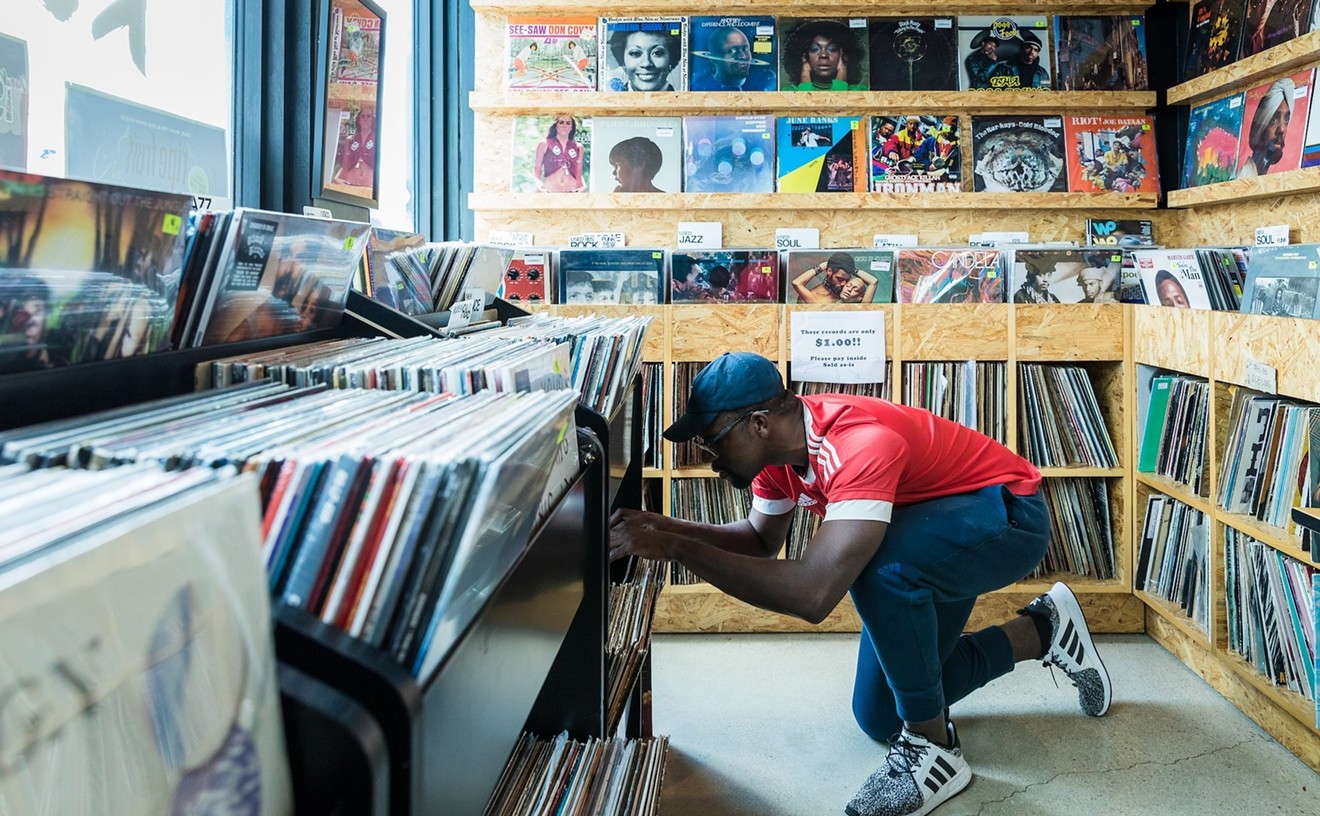To get to the crade of some of South Florida's best rock 'n' roll, head west on Yamato Road in Boca. Drive past a few strip malls, turn past the most massive one, and keep driving until the big-box stores finally fall away, replaced by the winding, sweeping vistas of impeccably watered lawns. The road patterns here are impenetrable to outsiders, and everything seems impossibly green. Turn down a side street and you'll be the only creature moving — the air is still, everything so quiet it qualifies almost as an absence of noise. But park on a sloping driveway, follow the walkway to the door of an airy, gabled bungalow, and stick your ear to the paneled door.
And through the wood, you will hear some of the nastiest, dirtiest, swampiest riffage you've never heard around these parts. This is the lair of Stonefox, the region's most improbable musical product — a trio (sometimes quartet) of 22-year-olds shouting down the devil with a bluesy squall pushed through Vox amps. Pushed inside by the oppressive weather and ennui of the local circuit, the band has retreated into its fortress, spending weeks at a time in the tangled wires spread across drummer Jeff Rose's carpeted, sunken living-room floor. And they wouldn't have it any other way — at least for now. "It's helped us write the way we want to write," says Dave Barnard, the band's dexterous second guitarist. "We're isolated from every band that's similar; they're all in, maybe, Boston or L.A. or New York, and here we are almost in the cracks of society, total suburbia. There's that, plus the heat and humidity — it makes you want to write some Delta blues shit."
The latest product of all this isolation is our gain: Back on the Wire, Stonefox's second album, due out on July 30 and heralded by a pair of CD-release parties (that night in Propaganda at Lake Worth and the next night, August 1, at the Poor House in Fort Lauderdale). The 12 tracks were recorded in Rose's living room, or five minutes down the road in Barnard's, although you'd never know it.
Building from a slow, low-down bluesy groove, the album manages to traverse '30s Mississippi, '60s California and New York, and early '70s Detroit before landing, surreally, in '00s South Florida with just enough polish for the braver indie-rock kids. For the quieter parts, think, maybe, Marc Bolan in his Tyrannosaurus Rex years but less purposefully weird and with more balls. For the louder parts, think, perhaps, a clothed Iggy or a Wayne Kramer but backed by players whose nimble fingers and precise mastery of scales belie musical families and years of formal training.
And although the Stonefox guys generally scoff at the bloated notion of "classic rock" per se, they've clearly digested the classics. Frontman/guitarist Jordan Asher name-checks bluesman Robert Johnson, usual suspects Robert Plant and Jimi Hendrix, and, specifically, "Bob Dylan going electric — we're talking like '64 to '66," Asher says. "It was really brash, with him putting really ugly blues over a full band and the band just playing on the spot with him. We actually have something like that on the album, built on a long improvisation."
The band's origins were pretty mundane, though. Longtime school friends Barnard and Rose, as teenagers, played in the clunkily named Stolen Bikes Ride Faster, an outfit they abashedly describe as "talent-core — just trying to play as many notes as possible in a measure," Barnard says. Later, they added Asher as well as Asher's older brother and became the more traditional rock, but still pretentiously named, band Legère. ("We thought it was French for light, like actual light, but later we found out it was more like lightweight," Rose says.) Eventually, Asher chafed under the band's Oasis-like vibe — in the realms of both music and intrabrother squabbles. He quit, and soon after, Legère broke up altogether, but Asher and Barnard soon met up again to start writing.
"We started writing on acoustic, so it was a lot of bluesier stuff, and with Jordan's voice, it really clicked. So we started recording at my house on a really shitty program with, like, a USB mic," Barnard recalls. "We edited it and put it in the car and were like, 'What the fuck did we just create?' "
With Rose back on board, their original, pared-down lineup was complete, dictating Stonefox's loud but relatively pared-down sound — Barnard ran his guitar through a bass amp, and that was that. The first scrappy set of recordings became an album, Dead Under the Sun, and Stonefox set out on a foolhardy but largely triumphant 2008 winter tour of the East Coast and Midwest. Sure, their van finally died in Tennessee — they abandoned it for a rental — and they circled several times past the venue they were slated to play in Chicago, mistaking it for a burned-out, abandoned building. But they were treated like visiting royalty in Cleveland and in Atlanta scored a bassist, Ross Fuentes, when they played a bill with his old punk rock 'n' roll band. Fuentes is still based in Atlanta but tours with the band and cowrote one song, "Smoke and Mirrors," on Back on the Wire.
Back in South Florida, they set out to record in earnest, sinking money into sessions at an acquaintance's warehouse studio. Shady dealings ensued, and the band never again saw the money or the recordings. All the better in the end — out of the ashes of that mess, they scored all of the studio's gear, from mics and cables to a complete ProTools setup. Stonefox looked homeward and never looked back. "When you're paying for time in someone else's studio, everything turns into 'good enough,' " Asher says. Barnard adds, "When you're recording yourself, you pretty much don't have to worry about anything except getting the take you want, the style you want."
That style has clearly jelled on Back on the Wire, a work of surprising technical achievement. The album's production is crisp when it should be and distorted when it should be — vocals run through guitar-amp distortion, guitar chords explode in a swarm of tambourines. All this from a morass of wires snaking by curio cabinets, from speakers abutting sofas, from drum kits positioned around kitty condos.
The record's mood too is focused in its intensity, almost cinematic in its build. The first half starts slow, the album's title track shaking with a Deep South bar band's swing as Asher's snake-charmer voice seems to wring itself out. It's a trippy invitation for the repentant to come worship at the altar of Stonefox's rock. The prayer gets gradually more fervent — "Go Back to California" picks up the pace with circling, trance-like rhythmic repetition and a few slicing guitar solos.
"Stun Like a Gun," a couple of tracks later, is a full-on revival — the kind of thing designed to make a crowd uncontrollably thrust pelvises and tear at hair. Things dial back a bit with "Ordinary People," an unexpectedly subdued standout that channels late-period Beatles, somewhere between "Rocky Raccoon" with its wistful strumming and "Eleanor Rigby" with its observation of daily routine. But by the penultimate track, "Fuzzy Ray," Stonefox is inciting the throngs again to get down and dirty, pegged onto a riff of maybe ten notes that are impossible to cleanse from the brain.
That's all heavy praise, but Back on the Wire is one hell of an induction into the Stonefox cult. Come to a service at Propaganda on July 30 or at the Poor House on August 1 and leave converted. If all goes right, Stonefox should soon be preaching to the masses.










